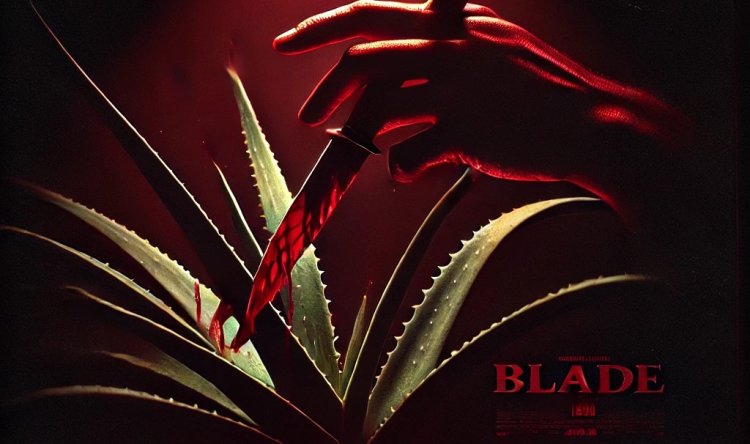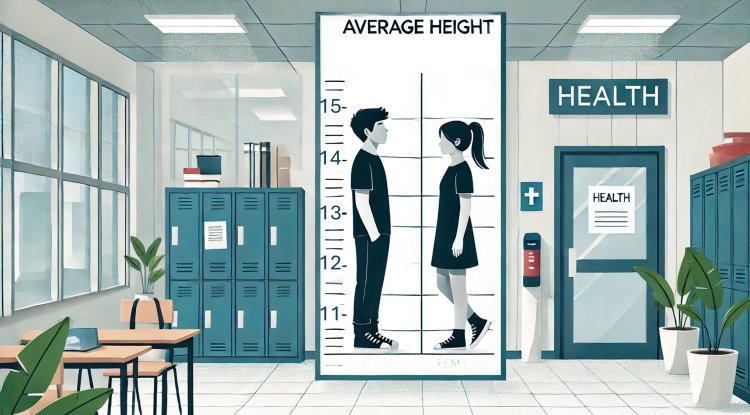Why does Blade cut his plant in the first movie?
The plant that had red flowers and was elegantly displayed in a Japanese-style setup served as a 'symbol' later in the movie regarding "cutting off your roots."

The act where the main character in the movie Blade (1998) chops off the roots of his plant gained some prominence in the course of the years for its ambiguous and symbolic quality. Set to the very same setting as this act is Japanese aesthetic; it has a cultural, narrative, and psychological connotation that cannot be fully perceived on the surface level. Cutting the roots of the plant becomes a metaphorical act representing his interior troubles, severance from his past, and the existential struggle he is experiencing between humanity and vampirism. This report will critically explore into layers of meaning of that scene-the cultural symbolism involved, narrative implications-and also touch on the psychological resonance of that scene in the context of the entire film and its themes.
The Scene: A Brief Overview
In Blade, a hybrid of half-man and half-vampire, Wesley Snipes plays a vampire-hunter, bent on killing vampires because of his bitterness about how they have wrought destruction on humanity. The part with the plant arrives later in the film, being the very one in which Blade takes deliberate care to 145000 Cull) out a pot of red-flowering plant, then proceeds to sever the plant pod from its root. In this minimalist set-up, evoking traditional Japanese Ikebana flower arrangement techniques, the beauty ofthe plant shines in subtle glory.
This little moment stands out for its sheer visuality; it emphasizes what Blade does and suggests other meanings to understand.The plant in question also used to be careful symbolism in the choosing. Though not clearly warned throughout the film, its red flowers while offered do brin_ back vestiges of feelings for passion, sacrifice, and death-very basic to insight into Blade's character. Severing away its roots therefore endows this otherwise slight romance with a resounding signature of severance's, grieving's and metamorphosis's representations.
Cultural Symbolism: Japanese Aesthetics and Hanakotoba
Japanese Influence in Visual Design
The presentation of the plant itself is Japanese-based for a reason. Things like ikebana (the art of flower arrangement) and hanakotoba (the language of flowers) go on in almost every cultural practice in Japan. Buddhists manage to task themselves with finding harmony things and balance in flowers and convey just a stemmed, yet flowery beauty of life. In ikebana, even the flower and how it is arranged is representative of an idea. Nestling the plant inside this aesthetic scheme enables the filmmakers to present it as rather solemn and introspective.
Hanakotoba: The Language of Flowers
In Japanese culture, flowers have long been used to express in-depth feelings or philosophical thoughts. According to hanakotoba, red flowers such as camellias (tsubaki) or spider lilies (higanbana) bear specific meanings that resonate with Blade's journey. Here, red camellia stands for a noble death or deep appreciation [2], while the red spider lily means final goodbyes and separation from a loved one [2]; these associations bear strong semblances to Blade's internal fight between accepting his human past and his vampire present. The action of severing the roots further enhances this symbol. Roots are usually a metaphorical representation of stability, heritage, or being connected to one's origins. Drawing their representation from being cut, Blade rebuffs the idea of his past-his attachments being human-and accepts the idea of being a lone warrior against vampires' evil.
Narrative Implications: Cutting Off Roots as a Metaphor
Severance from Humanity
The act of cutting the roots of the plant shows how Blade severed himself from mankind. Being a hybrid, after all, he was born when his mother was bitten by a vampire during childbirth [3]. Blade occupies a space of intersection between two worlds. With the strength of a vampire and immortality, he does not however have any of their weaknesses, such as the vulnerability to sunlight or garlic. Nonetheless, this comes at a price: he has to cope with an unquenchable thirst for blood, a constant reminder of his true heritage.
Throughout the entire film, Blade has to deal with this duality. Severing the roots means he was cutting himself from any emotional attachments that would jeopardize his ultimate goal. This indicates how he believed any rational or familial attachment was a liability in his unrelenting quest to eradicate the vampires.
Tactical Detachment
On a more practical angle, cutting roots could point to Blade's idea of war: simply cutting off any pinpointed weaknesses that foes might prey on. According to sources discussing this scene [,] Blade's action represents a stern and resolute commitment that nothing can be left for him to prove wrong in fighting his battles. Thereafter, severing ties with pre-existing bonds or his past equates to being a fierce person-hell-bent on his job.
Foreshadowing Transformation
And in so doing, this act also foreshadows Blade's eventual metamorphosis over the trilogy. Definitely in the first film, he does emerge as the stoic, the detached, and the figure of vengeance, while in subsequent films he is portrayed as a more humane character with the potential for emotional expression. Thus, it is a dual gesture: a pouring out from the roots signifies rejection and at the same time a preparation for growth, and both polarities reach a sort of paradox with Blade's very complex character arc.
Psychological Resonance: Identity and Existential Struggle
The Burden of Duality
Blade's dual identity as a "Daywalker" sets him in a continuous struggle between the morality of man and that of a vampire. His twofold nature takes form as an existential crown that dictates his worldview and triggers his life throughout the movie. Cutting off the plant's roots becomes a gesture by Blade to resolve this dilemma by renouncing one side of himself-his human parentage-while accepting his vampiric powers as a just means for good.
Psychologically, this could be taken as an act of self-hatred or denial. By engaging in the severing of his roots, Blade attempts to cut loose himself from those memories interconnected with pain, loss (like his mother's transformation into a vampire), and betrayal (Deacon Frost's manipulating him). It reflects his search for a meaning in life engulfed in violence and estrangement.
Catharsis Through Symbolism
For Blade, severing the roots could provide him with catharsis—an externalization of his conflict in some kind of ritual. Psychoanalytically speaking, such rituals can allow people to enact trauma as they attempt to bring about a sense of closure symbolically. In severing the plant's roots, Blade symbolically engages—and tries to win over—the suffering he carries from being a product of that background.
Broader Themes: Sacrifice and Redemption
Sacrifice as Central Motif
The theme of sacrifice appears continuously in Blade, both on the individual and societal scales. As one man battles vampires preying upon humanity[3], he gives up his personal happiness to ensure collective safety. Cutting the plant at the root represents this theme by signifying all that he needs to give up in order to ensure a better world for others.
Redemption Through Action
Blade may seem to be distancing himself from humanity, but he is still taking action to redeem himself by protecting humans from vampires. In hero narratives, a complex paradox is seen. Despite suffering, one finds purpose doing good for others (not self).
Conclusion: Interpreting Blade's Gesture
As Blade cuts through the roots of the plant, this scene embodies layers of meaning to deepen our understanding of his character and journey. From its cultural symbolism rooted in Japanese aesthetics to its narrative implications as a metaphor for severance and transformation, this moment serves both as an artistic flourish and as that which anchors the film's deeper themes.
In the end, Blade's gesture reveals his true self as a hero belonging to two parts of the world, characterized by sacrifice but motivated by redemption. The cutting of roots symbolizes a cutting off from the past, embracing isolation and strength toward a future beyond pain-a lingering reminder that in darkness surely lies potential for light beaconing for renewal.
sources
- Source 1: Why Does Blade Cut Himself?
- Source 2: 23 Beautiful Japanese Flowers & Their Symbolism
- Source 3: Blade’s 25th Anniversary & Superhero Cinema
- Source 4: Never Did Find the Answer
- Source 5: Hanakotoba - The Secret Meaning of 9 Japanese Flowers
- Source 6: 17 Blade Easter Eggs & Trivia
- Source 7: Google Answers Discussion
- Source 8: Unfolding the Petals - Japanese Flowers
- Source 9: Blade (1998) - Best Opening Scenes
- Source 10: The Symbolism of Japanese Flowers
- Source 11: 9 Blade Movie Trivia Facts
- Source 12: Cherry Blossoms in Japanese Culture
- Source 13: Blade (1998) on IMDb
- Source 14: Say It with a Bouquet - Japan’s Language of Flowers
- Source 15: Blade (1998) - Movie Connections
- Source 16: Guide to Japanese Flowers
- Source 17: Blade II (2002) on IMDb
- Source 18: Flowers in Japanese - Language Learning
- Source 19: Harsh Realities of Blade Movies
- Source 20: Japan’s Flower Language & Symbolism
What's Your Reaction?



















